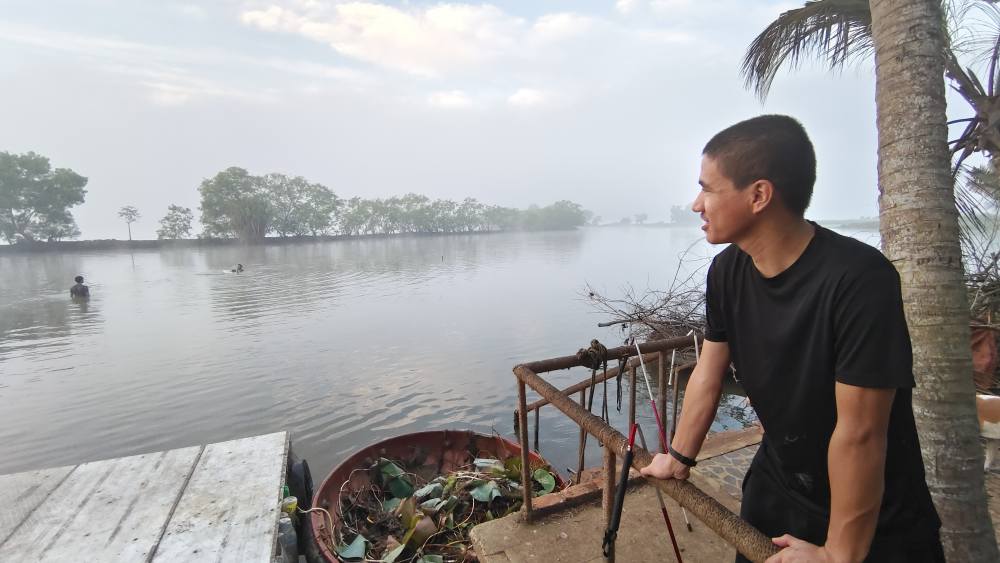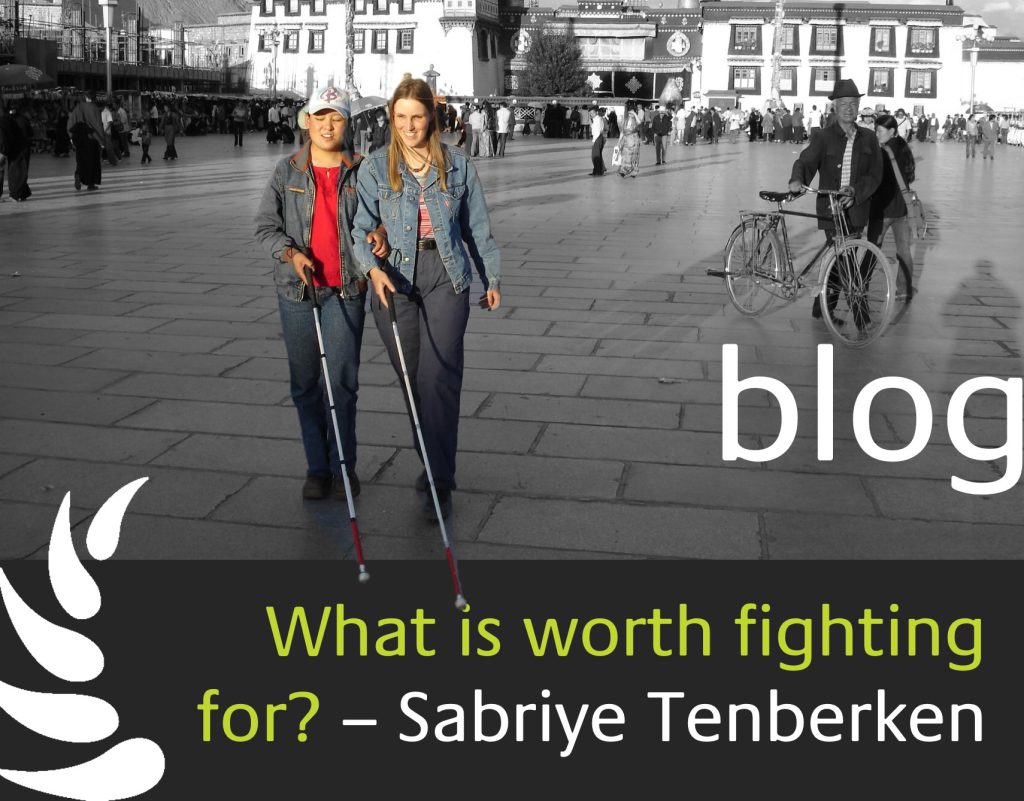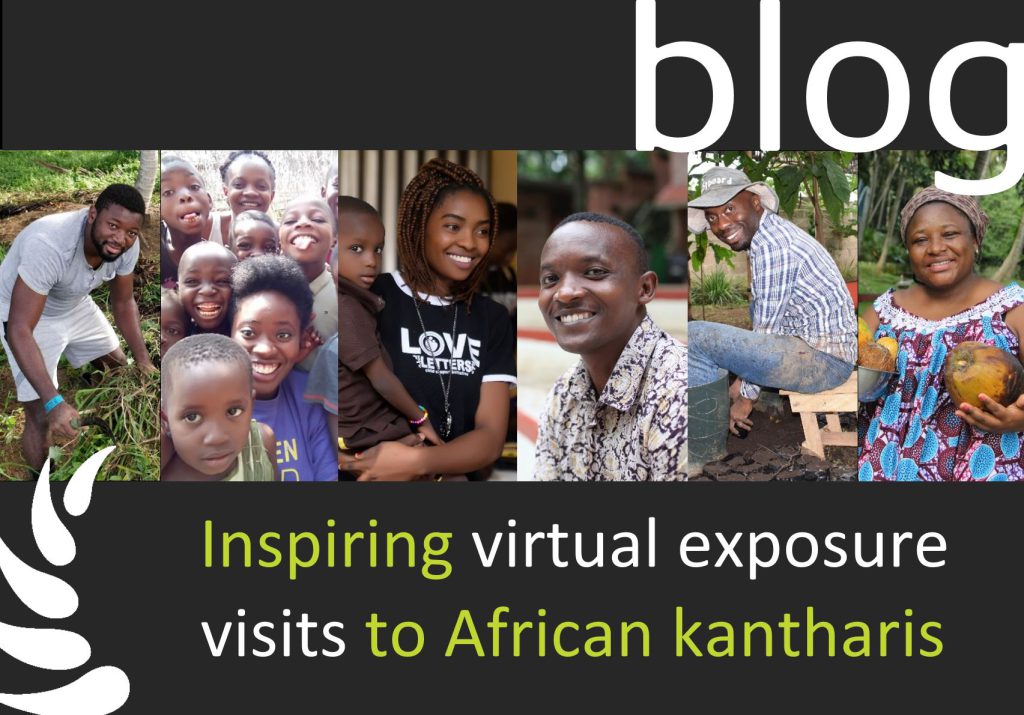“Accessibility for the disabled can only be considered in times of peace.
To survive during disasters, we have to be prepared beforehand to live under all thinkable circumstances.” – Nematullah Ahangosh.
By Sabriye Tenberken
I still remember the day our blind students returned somewhat confused from a city tour with the Lhasa Disability Bureau. The bureau officials had arrived at our school in the morning and grandly announced a surprise. All the older children were to take their white canes along and together they would go on a city tour.
The idea of an officially supervised city tour got a lukewarm reception from our students, who grew up very independently, making their daily forays through Lhasa alone or in groups. But they accompanied the officials without grumbling, perhaps to do them a favour. Paul and I, on the other hand, were very curious to see what was so important in the cityscape that it should be shown to our students?
“Nothing special,” one of the boys said after they shuffled back to school, dragging their sticks behind them, somewhat bored. “Just two concrete tactile grooves on the pavement.”
Together with Yudron, a former student and now teacher who had travelled unaccompanied and studied in Mainland China and Malaysia, we set out to see for ourselves. We came across tactile guidelines that had been specially placed for the blind on the pavements around the old town.
“That’s progress,” I said cheerfully, but Yudron remained skeptical. “This will only make us dependent and eventually we won’t be able to find our own ways.”
I remembered this statement when Paul and I travelled around Hong Kong a few months later. Throughout the entire inner part of the city, there were these tactile guidelines, audible traffic lights, and Braille labels. But when we talked to some local blind persons about whether they ever would venture out beyond the borders of Hong Kong, they answered unanimously: We stay in Hong Kong, there are too many barriers elsewhere.
Over the years we were living and working in Tibet and India, in terms of accessibility, a lot had happened in Europe. During my short stays in Germany, I was quite amazed by the different adaptations; some more sensible than others, at least in my opinion.
For example I appreciate Braille inscriptions on medicine boxes or in public lifts. But then, suddenly, all these tactile grooves appeared in every train station and pedestrian zone, which for me was rather confusing at first. At some point, I took the challenge, stuck the tip of my cane into one of the grooves and went for it. But when concentrating entirely on following that groove, I soon felt let down by my sense of direction and so I had to abandon the experiment, with the mixed feeling of being “old school” when it comes to mobility.
During our time in India, we were hardly confronted with the issue of accessibility for the blind. Of course, in conferences and in personal conversations with government officials, I advocated for a wheelchair-friendly Kerala with ramps, lifts, and accessible toilets, but tactile guidelines for the blind on pavements were not at all a priority for me. I had not missed them during my travels in Asia and had therefore completely forgotten about their existence.
It was only when special needs teachers showed up at the kanthari campus and complained that pathways were not marked in a blind-friendly way and that corridors were not built at right angles to each other, thus limiting the blind participant’s orientation. At this point, we became petulant and responded that the world is round and does not consist of “blind-friendly” 90-degree angles.
Many of the blind kantharis who learned to start and run their organizations came from African countries, some from cities, but many from remote and rural areas. Like our blind students in Tibet, they had learned to find their way in rough terrain. For them too, the greatest achievements worth fighting for were not elaborate infrastructural adjustments but access to quality education.
“And how do blind Indians feel about barrier-free infrastructure?”, a German journalist once asked me, who, blind himself, had by now become accustomed to the comfort of traveling in Europe. “Well, what you don’t know, you won’t desire!”, I answered curtly and then explained that in India only a few would have the guts to plunge into the traffic chaos, only equipped with a white cane. “What do you need guidelines for when there aren’t even pavements!” And then, a few weeks ago, I was rather rudely made aware by blind people in my current home country, India, that they were very much fighting for blind-friendly infrastructure here.
I had the opportunity to watch a two-week “survival camp” for the blind from the side-lines. Nematullah Ahangosh, founder of the organisation “Stretch More” and organizer of the survival camp, is a graduate of the last kanthari course. He hails from Afghanistan and because in interviews with international media he had occasionally expressed his anger about the conditions prevailing there, he cannot return for the time being. Nemat, as we call him here in kanthari, is walking impaired. Due to a progressive muscle disease, he knows that he will be in a wheelchair eventually. In his final speech at the kanthari talks, he vividly described how dangerous a war zone is for people with disabilities.
“In chaos, everyone is disabled,” Nematullah says laconically. “We are forgotten. That’s why in crises we have to learn to save ourselves.” Now his organisation Stretch more offers survival camps for the disabled in crisis areas. Even though Kerala is one of the most peaceful states in India, there are crises here too that can be life-threatening, especially for people with disabilities. Just think of the flood of the century in 2018, in which many people died because they could not swim.
Nemat made a small publicity campaign and the bravest, four blind young men, signed up for a two-week workshop. Together with Riya, one of our catalysts, who is a former swimmer in India’s national youth team, they organized an intensive swimming training.
In addition, they also learned everything that could help them survive in a crisis: Different methods to filter water, build shelters, make fire without matches and first aid skills to treat wounds. “The fire-making didn’t work,” Nemat said, “we would have starved miserably by now!”
I had a feeling that Nemat’s participants were very enterprising, so I invited them to a focus group discussion with representatives from the Kerala University of Architecture that had been planned for some time. The discussion was about universal design and if blind-friendly infrastructure was really necessary, or whether scarce public funds could be better spent on really important, yet expensive construction for the walking-impaired. After all, tactile flooring on pavements, like many roads in the tropics, would have to be renewed annually after each Monsoon. If the government wanted to do something for us, the blind, it would be better to invest public funding in sturdy long white canes and excellent mobility training.

Believing that I was not alone in my opinion, I made jokes about tactile guidelines and promptly received a verbal beating from the other blind participants. They made it all too clear that they felt betrayed by me and my ideas. And when Nemat took up the discussion again later, they also accused him of being against assistive technology and adaptive infrastructural design. Initially, Nemat was surprised by the hefty accusations, perhaps even a little offended. But then we realized something crucial: we both, Nemat and I, had indeed experienced in different ways that overcoming barriers can certainly be strengthening. But Nemat’s goal, like the one we have at kanthari, is about empowerment, about being able to cope in any situation in life, and if necessary, without help. Especially in uncertain times like these, it is important to know what really matters. Solidarity among the different groups of persons with disabilities plays a very important role in this.
Whereas blind people can find their way around anywhere, with or without help, more or less quickly, even without guidelines, stairs without ramps or lifts are insurmountable for people in wheelchairs. The situation, however, is completely different on the Internet. Many websites are inaccessible to blind people who rely on assistive technology, like screen reading systems. Here, we are the ones who need a ‘ramp’ or ‘lift’ in a virtual sense. In the end, it is about self-responsibility without protectiveness, and that is what we are primarily concerned with, choosing our battles with prudence and deciding what is worth fighting for.



